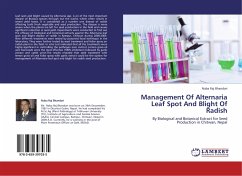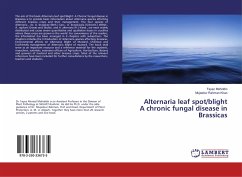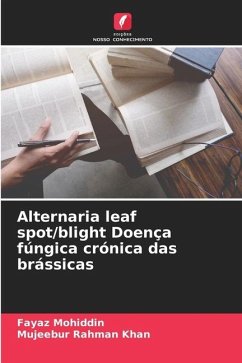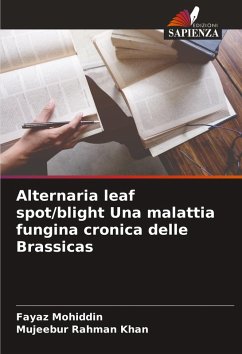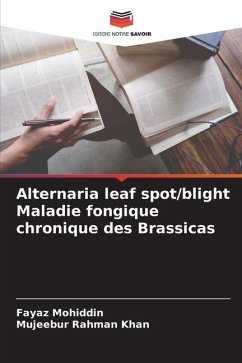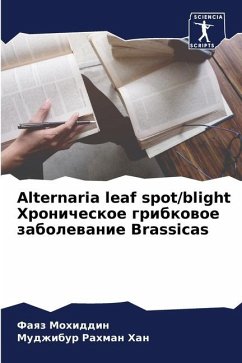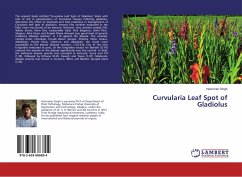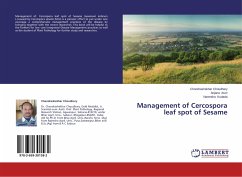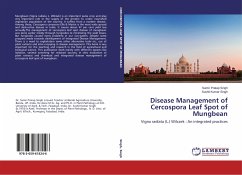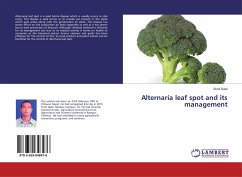
Leaf spot and Blight of Cotton and its Management
Symptomatology, Morphology and Management of leaf spot of Cotton Cotton(Gossypium herbaceum)
Versandkostenfrei!
Versandfertig in 6-10 Tagen
29,99 €
inkl. MwSt.

PAYBACK Punkte
15 °P sammeln!
Cotton (Gossypium sp.) is one the most important fibre cash crop of India as well as the world. The crop is known to suffer from several diseases. Among them, leaf spot and blight caused by Alternaria macrospora is an important one. The disease produced small, necrotic, circular brown spots on leaves, with a purplish halo and expands to about 1 cm diameter the centre becoming grey and cracked, Finally, the spots enlarge in size which later on resulted defoliation of leaves. The pathogen was slow growing and aerial septate and hyaline mycelium. Conidiophores measured 30-132 x 5.2-7.9 µm. Conid...
Cotton (Gossypium sp.) is one the most important fibre cash crop of India as well as the world. The crop is known to suffer from several diseases. Among them, leaf spot and blight caused by Alternaria macrospora is an important one. The disease produced small, necrotic, circular brown spots on leaves, with a purplish halo and expands to about 1 cm diameter the centre becoming grey and cracked, Finally, the spots enlarge in size which later on resulted defoliation of leaves. The pathogen was slow growing and aerial septate and hyaline mycelium. Conidiophores measured 30-132 x 5.2-7.9 µm. Conidia, taken directly from the host measured 24.8-124.6x 7.3-21.8 µm including the beak length. On the basis of morphological characteristics, the fungus was identified as Alternaria macrospora Zimm. Under in vitro condition, systemic fungicide tebuconazole was found to be the most effective fungicide and inhibited (100%) mycelial growth. Tebuconazole (0.0375 %) was proved the best in controlling the disease (82.66 %) in vivo where minimum disease intensity (5.66 %) was recorded. resulting in higher cotton yield (6331.02 kg/ha).



